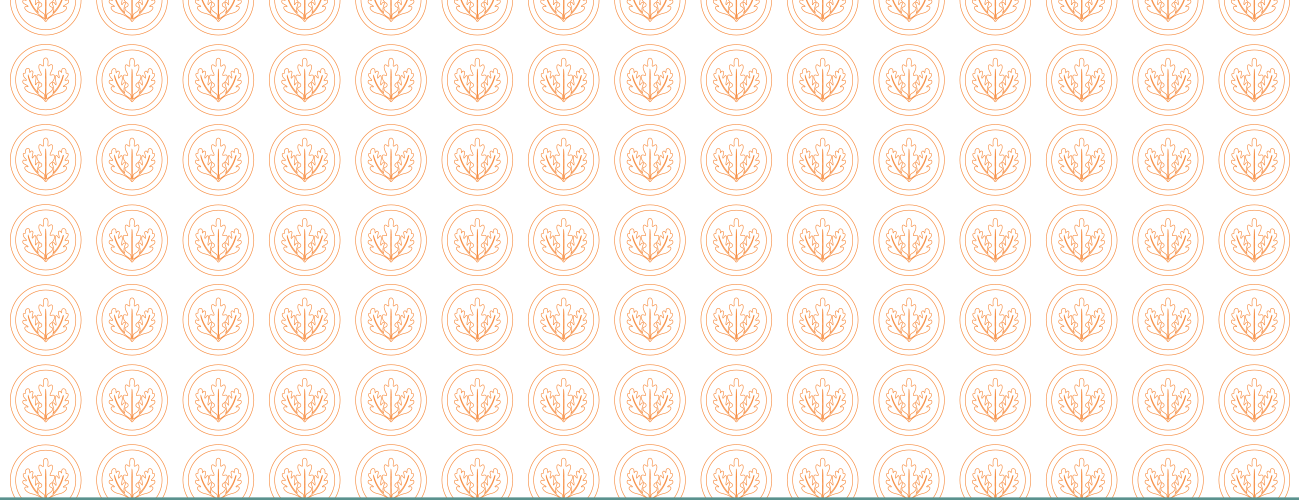10X10: Lessons from LEED Part I
evolveEA launched in the early years of the LEED platform, when the construction industry did not have the case studies and data to guide projects to an environmentally sustainable outcome. Projects pursuing LEED back then were true pioneers, and our practice was built by iterating the design process with each new project to contribute to an industry-wide body of knowledge that has transformed the way we envision and create new places. In our 20th anniversary year, we are reflecting upon evolveEA’s roots not just for the comfort of nostalgia but to shape our strategy for the next 20 years. We strive to go beyond Net Zero Energy to steward collaborative architecture that provides positive, restorative benefits for people and the planet as long into the future as we can imagine.
We’re reviewing some of our most important lessons learned after completing more than 100 LEED certified projects in order to share ten key themes. Our 10×10 series highlights ten LEED projects from our portfolio that exemplify the value of frameworks, the transformative impact of sustainable design, and the power of leadership. After all, the “L” in LEED encourages projects to lead by example, to set ambitious goals, and to be courageous in bringing change to the way we create places.
1. A New Green Standard: Giant Eagle
Over one dozen LEED Certifications
2004 – present

We helped Giant Eagle refine a standard for LEED certified stores through a series of projects across Ohio and Pennsylvania. These projects, a dozen in total, pioneered green design strategies in their sector, including the first-ever LEED certified supermarket, using LEED version 2. Energy intensive refrigeration and lighting for stores had made sustainability a challenge in the earlier days of the LEED rating system. Our team used LEED to organize sustainability initiatives for the Giant Eagle chain, including the relatively new concept of energy modeling to demonstrate the return-on-investment, allowing for the exploration of new concepts such as daylighting, desiccant dehumidification, green roofs, and heat capture.
Skylights and daylighting, once vigorously avoided by retail stores, were used in concert with photometric sensors and dimmable ballasts, resulting in steady light levels and energy savings. evolveEA provided evidence that daylighting would better render products and posited that it would lead to more sales. The results proved this correct, and Giant Eagle worked with us to present our results nationally, lead tours for industry peers and change industry standard practices. Giant Eagle embraced incremental thinking during their expansion evolve from a $4.5B to a $9B company. Raising the bar with each project’s environmental goals, we created a staircase trajectory, tracking the steady improvement of market prototypes for Giant Eagle, Market District and GetGo stores.
2. Transformative Culture: Bridger View
LEED for Neighborhood Development Gold Certified
2022
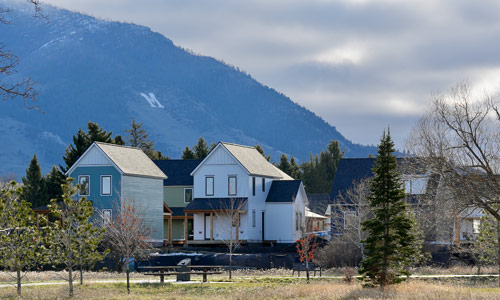
What does it take to create an entire neighborhood designed to provide affordable and sustainable worker housing? evolveEA began working on the Bridger View development in 2017, engaged by the Trust for Public Land after the community in Bozeman, Montana decided to begin working toward their vision of a dense and walkable housing community adjacent to Story Mill Park’s breathtaking natural beauty and enticing network of trails. Years of working with a carefully assembled professional team led us to a transformation in the way mountain region communities develop — physical space, governance, financing, walkability and day-to-day lifestyle have a new model in the Bridger View project.
Space comes at a very high premium in Bozeman, where the city must limit sprawl in order to preserve the beauty of the mountain landscape that draws so many to the region. To keep Bridger View affordable for working families, an innovative finance model involving a Community Land Trust was developed.
The project impacted how local policy could support missing middle housing, how neighbors share space and commute to and from the rest of the city, and how well-designed homes of a modest size can provide high levels of comfort while ensuring long-term affordability. The construction process was used for the education of contractors and developers about Passive House principles. Bridger View also demonstrates how the LEED ND framework validates design decisions at the neighborhood scale beyond energy efficiency to limit environmental impacts from construction and facilitate smarter, more efficient living.
During her visit this year to the completed neighborhood, evolveEA’s Christine Mondor, FAIA remarked:
Five years, eight acres, nineteen zoning code relaxations, 62 units, and 1 new community housing trust later and the Bridger View neighborhood is officially complete!
The houses are modest with the generous porches to honor the commitment to outdoor living. Community life is already visible. The framing of the mountains, both inside and outside the buildings, exceeded my expectations.
3. Being First: HSBC
LEED for New Construction Gold Certified
2010
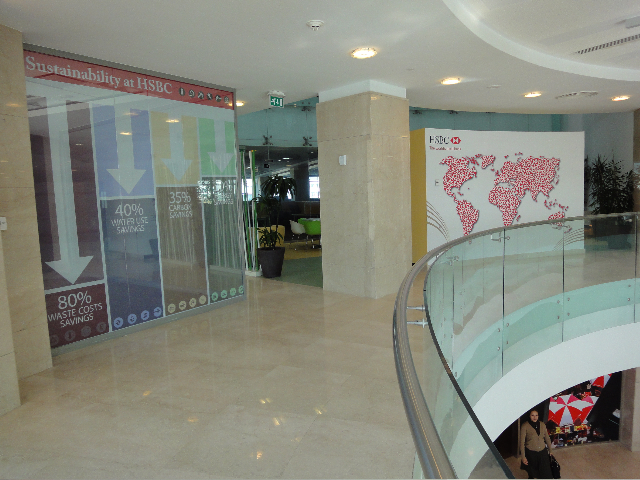
The Global Processing Center for HSBC in Cairo, Egypt was an opportunity for the bank to give their commitment to reduce carbon footprint a tangible project. We worked with the design team, engineers, and owners to set goals for the project. At the time, there was no local sustainability consultant who could guide them through the process, so we were engaged and also brought on a commissioning agent and energy modeler. We created a custom education plan to help everyone—the users, the team, future visitors—understand environmental concepts and the LEED framework.
As the first LEED certified project in the entire continent of Africa, Gold level certification set a powerful example of what is possible. HSBC was so pleased with this result and the projected 30% energy savings that they calculated a carbon savings bonus rebate which was extended to the design team after the building was occupied. Another interesting aspect of the bank’s approach to investing in the local economy was its funding of a number affordable housing projects in the vicinity of the Smart City near Giza, Egypt.
The local architect Archimid, the engineer Emdeg, and other local professionals from the team were able to carry this experience forward to integrate sustainability principles into future projects, although not many LEED projects have emerged in Egypt since. The project served as HSBC’s model for other capital projects around the world, and it also influenced the creation of a regional sustainability framework, the Estidama Pearl rating system, which borrowed from LEED and from this project in its development.
4. Leveraging Value: Erie Art Museum
LEED for New Construction Gold Certified
2014
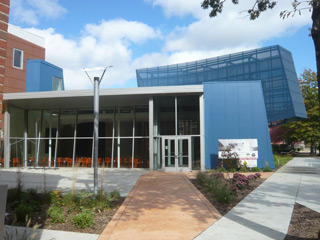
As Erie’s first LEED certified building, the Erie Art Museum set a powerful example by achieving a high scoring Gold level certification. evolveEA managed the LEED process with the design and construction team, and also designed educational graphics that promote the museum’s sustainability highlights. The museum addition was a big success story for the city of Erie PA for these reasons:
- The green renovation of a historic building: Completed in 1839 as the Erie Branch of the U.S. Bank of Pennsylvania, the Museum’s existing building is rich with history, having served as a post office, the U.S. Customs House and a meeting hall for the Grand Army of the Republic before being restored for use as a museum in the 1960’s.
- The museum’s prominent downtown location and its iconic architecture draws over 10,000 visitors annually, and the project was intended to inspire a green building trend throughout Erie. The museum also engaged evolveEA in the graphic design of educational content about its LEED certification, which became an important aspect of the museum experience and has helped sustainable design practices grow in the Erie region over the past decade.
- The museum’s leadership played a role in helping the Green Building Alliance and local partners establish the Erie 2030 District. 2030 Districts accelerate the decarbonization of buildings through a shared commitment to reducing energy consumption (50% reduction by the year 2030 for existing buildings, net zero by 2030 for new buildings). Today the Erie 2030 district has over 130 committed buildings, averaging an annual total of roughly $3 million in energy cost savings and more than 30,000 mT of carbon emissions avoided (source Erie 2030 District report, 2022). As a founding partner of the district, the EAM has shown that LEED can have a lasting positive impact years after the building and the certification process are completed.
5. Cooperation (Tenants & Owner): U.S. Steel Tower
LEED for Existing Buildings Silver Certified
2019
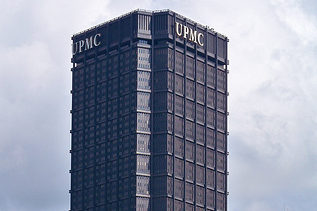
evolveEA was approached about greening the iconic US Steel Tower by the building’s primary tenant UPMC in 2008. Building from the management of LEED Commercial Interiors for several floors, there was skepticism that this 1970 tower did not have a chance at energy efficiency or sustainability in a cost-effective manner. As evolveEA managed the conversion of successive floors to LEED CI standards, the building management noticed overall energy usage reduction, despite occupancy increases. We helped to achieve BOMA 360 certification for the building, sharing the work with the management’s offices across the country.
With this momentum, our team created a Tenant Sustainability Committee, an innovative platform by which the landlord and tenant were able to collaborate. Regular meetings consisted of evolveEA’s team sharing a new concept, explaining the current situation, then encouraging tenants to adopt the new way of thinking. We convened the committee over five years, leading to policies, events, and publicity. We led the building to achieve Energy Star certification several times, then LEED for Existing Buildings Silver certification. During COVID, we led a WELL Health Safety Rating achievement, which has been performed annually. This transformation of the largest office tower between Philadelphia and Chicago has had tremendous impact.


